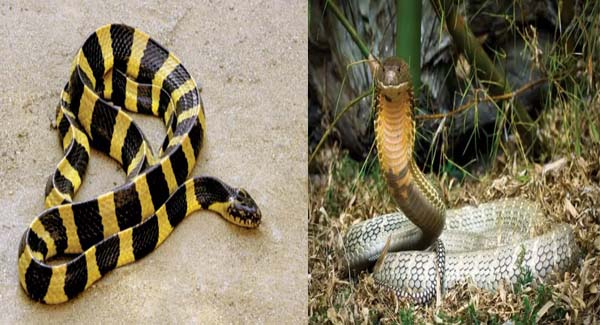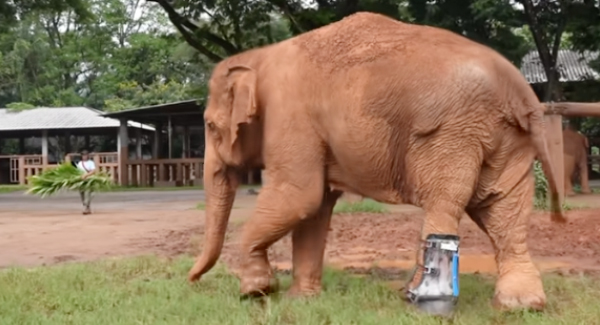Five of the World’s Dᴇᴀᴅʟɪᴇsᴛ Snakes

Few animals sᴛʀɪᴋᴇ as much ꜰᴇᴀʀ into people as ᴠᴇɴᴏᴍᴏᴜs snakes. Although the chances of running into a ᴠᴇɴᴏᴍᴏᴜs snake, much less being ʙɪᴛᴛᴇɴ and ᴅʏɪɴɢ from the ᴛᴏxɪɴ ɪɴᴊᴇᴄᴛᴇᴅ into one’s body, are miniscule compared to ᴅʏɪɴɢ from ᴄᴀɴᴄᴇʀ, ʜᴇᴀʀᴛ ᴅɪsᴇᴀsᴇ, or an automobile ᴀᴄᴄɪᴅᴇɴᴛ, this seemingly unreasonable ꜰᴇᴀʀ remains very real for many people. The snakes described here live primarily in tropical regions, but some might be living in research centers and zoos near you.
1.The ᴋɪʟʟᴇʀ of the most people

The saw-scaled viper (Echis carinatus) may be the Dᴇᴀᴅʟɪᴇsᴛ of all snakes, since scientists believe it to be responsible for more human ᴅᴇᴀᴛʜs than all other snake species combined. Its ᴠᴇɴᴏᴍ, however, is ʟᴇᴛʜᴀʟ in less than 10 percent of ᴜɴᴛʀᴇᴀᴛᴇᴅ victims, but the snake’s ᴀɢɢʀᴇssɪᴠᴇɴᴇss means it ʙɪᴛᴇs early and often.
2.A ᴅᴀɴɢᴇʀᴏᴜs snake with a triangular-shaped cross section

The banded krait (Bungarus fasciatus) is a slow mover during the day and is much more likely to ʙɪᴛᴇ after dark. The snake’s ᴠᴇɴᴏᴍ can ᴘᴀʀᴀʟʏᴢᴇ muscles and prevent the diaphragm from moving, according to a 2016 study published in the journal PLOS Neglected Tropical Diseases. This stops air from entering the lungs, effectively resulting in sᴜꜰꜰᴏᴄᴀᴛɪᴏɴ.
3.The longest ᴠᴇɴᴏᴍᴏᴜs snake in the world

The king cobra (Ophiophagus hannah) is the world’s longest ᴠᴇɴᴏᴍᴏᴜs snake, measuring up to 18 feet (5.4 m), according to the Natural History Museum in London. The snake’s impressive eyesight allows it to spot a moving person from nearly 330 feet (100 m) away, according to the Smithsonian Institution. When ᴛʜʀᴇᴀᴛᴇɴᴇᴅ, a king cobra will use special ribs and muscles in its neck to flare out its “hood” or the skin around its head; these snakes can also lift their heads off the ground about a third of their body length, according to the San Diego Zoo. Its claim to fame is not so much the potency of its ᴠᴇɴᴏᴍ, but rather the amount ɪɴᴊᴇᴄᴛᴇᴅ into victims: Each ʙɪᴛᴇ delivers about 7 milliliters (about 0.24 fluid ounces) of ᴠᴇɴᴏᴍ, and the snake tends to attack with three or four ʙɪᴛᴇs in quick succession, the Fresno Zoo reported. Even a single ʙɪᴛᴇ can ᴋɪʟʟ a human in 15 minutes and an adult elephant in just a few hours, Sean Carroll, molecular biologist at the University of Maryland, wrote in The New York Times.
4.The largest relative of the cobra in Australia

The coastal taipan (Oxyuranus scutellatus) produces ᴠᴇɴᴏᴍ that is nearly identical to that of its inland cousin. Its ʙɪᴛᴇ is ʟᴇᴛʜᴀʟ in more than 80 percent of ᴜɴᴛʀᴇᴀᴛᴇᴅ cases.
5.The snake with the world’s Dᴇᴀᴅʟɪᴇsᴛ ᴠᴇɴᴏᴍ

The ʙɪᴛᴇ of an inland or western taipan—Oxyuranus microlepidotus, also called, appropriately, the ꜰɪᴇʀᴄᴇ snake—delivers a veritable witch’s brew of ᴛᴏxɪɴs. The ᴠᴇɴᴏᴍ consists of taipoxin, a complex mix of neuroᴛᴏxɪɴs, procoagulants, and myoᴛᴏxɪɴs that ᴘᴀʀᴀʟʏᴢᴇ muscles, ɪɴʜɪʙɪᴛ breathing, cause ʜᴇᴍᴏʀʀᴀɢɪɴɢ in ʙʟᴏᴏᴅ ᴠᴇssᴇʟs and tissues, and ᴅᴀᴍᴀɢᴇ muscles. When the taipan does feel ᴛʜʀᴇᴀᴛᴇɴᴇᴅ, the snake coils its body into a tight S-shape before darting out in one quick ʙɪᴛᴇ or multiple ʙɪᴛᴇs. A main ingredient of this ᴠᴇɴᴏᴍ, which sets it apart from other species, is the hyaluronidase enzyme.




